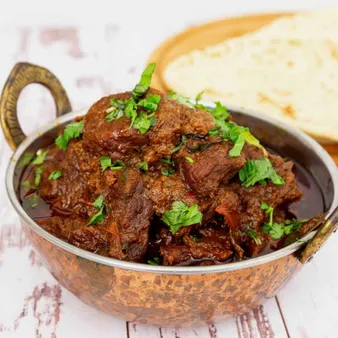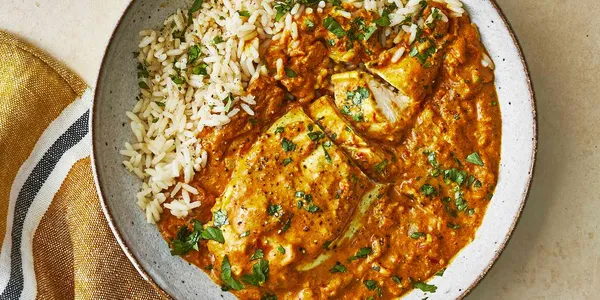Table of Contents
Are you ready to embark on a culinary journey to the vibrant streets of India? If so, then our comprehensive guide on "How to make authentic Indian curry" is the perfect starting point. We'll take you step-by-step through the process of creating a mouthwatering curry that will tantalize your taste buds and leave you craving more. So, gather your ingredients, fire up the stove, and let us guide you on this exciting culinary adventure. At Tauhuichiban, we believe that cooking should be accessible and enjoyable for everyone. Whether you're a seasoned chef or a novice in the kitchen, our clear instructions and tips will empower you to create an authentic Indian curry that will impress your family and friends.

How to Make Authentic Indian Curry: A Comprehensive Guide to Indian Cuisine
I. Ingredients to Consider for Authentic Indian Curry
When it comes to creating an authentic Indian curry, the ingredients you use play a crucial role in determining the final flavor and aroma of the dish. Here are some key ingredients to consider:
Spices: Indian curries are renowned for their complex blend of spices. Some of the most commonly used spices include turmeric, cumin, coriander, chili powder, and garam masala. These spices not only add flavor but also provide various health benefits.
Aromatics: Aromatics such as onions, garlic, and ginger form the base of many Indian curries. They provide a savory and fragrant foundation for the dish.
Tomatoes: Tomatoes are often used in Indian curries to add a tangy and slightly sweet flavor. They also help to thicken the sauce.
Yogurt or Coconut Milk: Yogurt or coconut milk can be added to curries to create a creamy and rich texture. They also help to balance the heat of the spices.
Fresh Herbs: Fresh herbs such as cilantro, mint, and basil are often used to garnish Indian curries. They add a vibrant flavor and aroma to the dish.
Other Ingredients: Depending on the region and type of curry, other ingredients such as lentils, potatoes, or paneer (Indian cheese) may also be added.
Spice | Flavor Profile |
|---|---|
Turmeric | Earthy, slightly bitter |
Cumin | Warm, nutty |
Coriander | Citrusy, slightly sweet |
Chili Powder | Spicy, smoky |
Garam Masala | A blend of spices including cinnamon, cloves, and cardamom |

Ingredients to Consider for Authentic Indian Curry
II. Techniques to Master for a Flavorful Curry
The Art of Layering Spices
The key to a flavorful curry lies in the art of layering spices. Start by toasting whole spices in a pan until fragrant, then grind them into a powder. This releases their essential oils and intensifies their flavor. Add the ground spices to the curry base and cook them for a few minutes to allow them to bloom and release their full potential.
Here are some of the most common spices used in Indian curries:
- Cumin
- Coriander
- Turmeric
- Garam masala
- Red chili powder
The proportions of each spice will vary depending on the desired flavor profile. Experiment with different combinations to find your perfect balance.
Balancing Flavors
A well-balanced curry should have a harmonious blend of flavors. This means achieving the right balance of sweet, sour, salty, and spicy. Sweetness can be added through the use of onions, tomatoes, or fruit. Sourness can be introduced with lemon juice, tamarind, or yogurt. Saltiness is typically provided by salt or fish sauce. And spiciness can be adjusted with the addition of chili peppers or red chili powder.
It's important to taste the curry as you cook and adjust the seasonings accordingly. Don't be afraid to experiment until you find the perfect balance of flavors.
Cooking Techniques
The way you cook your curry will also affect its flavor. There are two main methods of cooking curry: wet and dry. Wet curries are cooked in a liquid, such as water, broth, or coconut milk. Dry curries are cooked with little or no liquid. Each method produces a different flavor and texture.
Wet curries are typically more flavorful and have a richer sauce. Dry curries are more concentrated and have a more intense flavor. The best method for cooking your curry will depend on your personal preferences.
Garnishing and Serving
Once your curry is cooked, it's important to garnish it properly to enhance its presentation and flavor. Common garnishes for curry include cilantro, mint, onions, and yogurt. These garnishes add a fresh, vibrant flavor to the dish and help to balance out the richness of the curry.
Curry is typically served with rice, naan, or roti. It can also be served with a side of raita, a yogurt-based sauce that helps to cool down the heat of the curry.
Tips for Making the Perfect Curry
Here are a few tips for making the perfect curry:
- Use fresh, high-quality ingredients.
- Toast your spices before grinding them.
- Balance the flavors of your curry.
- Cook your curry using the appropriate method.
- Garnish your curry properly.
With a little practice, you'll be able to make delicious, flavorful curries that will impress your family and friends.

Techniques to Master for a Flavorful Curry
III. Cooking Techniques for a Rich and Aromatic Curry
The Art of Layering Flavors
Creating an authentic Indian curry is an art form that requires patience, skill, and a deep understanding of the delicate balance of spices. One of the most important techniques in achieving a rich and aromatic curry is the layering of flavors. This involves adding ingredients to the pot in a specific order, allowing each ingredient to release its unique flavors and aromas before the next is added.
The first step in layering flavors is to create a base of aromatics. This typically includes onions, garlic, ginger, and green chilies. These ingredients are sautéed in oil until they are softened and fragrant. Once the aromatics are cooked, the next step is to add the spices. The most common spices used in Indian curries include turmeric, cumin, coriander, and garam masala. These spices are added to the pot and toasted for a few minutes, allowing their flavors to bloom.
- The next step is to add the main ingredients of the curry. This can include meat, vegetables, or a combination of both. The ingredients are cooked until they are tender and the flavors have melded together.
- Once the main ingredients are cooked, the final step is to add the liquid. This can be water, coconut milk, or a combination of both. The liquid is simmered until the curry has reached the desired consistency.
Tips for Layering Flavors
Here are a few tips for layering flavors in your curries:
- Use fresh, high-quality ingredients. The better the ingredients, the better the curry will be.
- Don't be afraid to experiment with different spices. There are many different spice combinations that can be used to create a delicious curry.
- Be patient. Layering flavors takes time. Don't rush the process, or you will end up with a bland curry.
With a little practice, you can master the art of layering flavors and create delicious, authentic Indian curries that will impress your family and friends.
Additional Tips for Making a Great Curry
In addition to layering flavors, there are a few other tips that can help you make a great curry:
- Use a heavy-bottomed pot. This will help to distribute the heat evenly and prevent the curry from burning.
- Cook the curry over low heat. This will allow the flavors to develop slowly and evenly.
- Stir the curry frequently. This will help to prevent the ingredients from sticking to the bottom of the pot.
- Taste the curry as you cook it and adjust the seasonings as needed.
With these tips, you can create delicious, authentic Indian curries that will be sure to please everyone at your table.

Cooking Techniques for a Rich and Aromatic Curry
IV. Tips for Achieving the Perfect Consistency in Your Curry
The Art of Balancing Spices and Liquids
Achieving the perfect consistency in your curry is a delicate balance of spices and liquids. Start by sautéing your aromatics, such as onions, garlic, and ginger, in a hot pan with a little oil. This will help to release their flavors and create a flavorful base for your curry. Once the aromatics are softened, add your spices and cook them for a minute or two, stirring constantly. This will help to bloom the spices and release their full flavor potential. Then, add your liquids, such as coconut milk, broth, or water, and bring the mixture to a simmer. Let the curry simmer for at least 30 minutes, or until the flavors have melded and the sauce has thickened. If the curry is too thick, add more liquid. If it is too thin, simmer it for longer or add a cornstarch slurry.
The Importance of Using the Right Ingredients
The ingredients you use in your curry will also affect its consistency. For a thicker curry, use more coconut milk or broth. For a thinner curry, use more water. You can also add vegetables to your curry, such as potatoes, carrots, or peas. These vegetables will help to thicken the curry and add flavor. If you are using meat in your curry, brown it before adding it to the pot. This will help to seal in the juices and prevent the curry from becoming watery.
Tips for Troubleshooting Curry Consistency
If your curry is too thick, there are a few things you can do to thin it out. First, try adding more liquid, such as coconut milk, broth, or water. You can also add a cornstarch slurry, which is made by mixing equal parts cornstarch and water. Add the cornstarch slurry to the curry and stir until it has thickened. If your curry is too thin, there are a few things you can do to thicken it. First, try simmering it for longer. This will allow the liquid to evaporate and the curry to thicken. You can also add a thickening agent, such as cornstarch or flour. Add the thickening agent to the curry and stir until it has thickened.
Tip | Description |
|---|---|
Use a heavy-bottomed pot. | This will help to distribute the heat evenly and prevent the curry from burning. |
Sauté the aromatics before adding the spices. | This will help to release their flavors and create a flavorful base for your curry. |
Bloom the spices before adding the liquids. | This will help to release their full flavor potential. |
Simmer the curry for at least 30 minutes. | This will allow the flavors to meld and the sauce to thicken. |
Add more liquid if the curry is too thick. | You can use coconut milk, broth, or water. |
Add a cornstarch slurry if the curry is too thin. | This will help to thicken the curry without adding more liquid. |

Tips for Achieving the Perfect Consistency in Your Curry
V. Conclusion
Congratulations on completing your culinary journey and mastering the art of making authentic Indian curry. With careful ingredient selection, meticulous preparation, and a touch of patience, you have created a dish that embodies the rich flavors and vibrant traditions of India. As you savor each bite of your homemade curry, take pride in your accomplishment and enjoy the satisfaction of bringing a taste of India into your own kitchen. Continue to experiment with different spices, herbs, and cooking techniques to refine your skills and create your own unique culinary masterpieces. Remember, the joy of cooking lies in the process itself, so embrace the flavors, aromas, and memories that your authentic Indian curry will create.